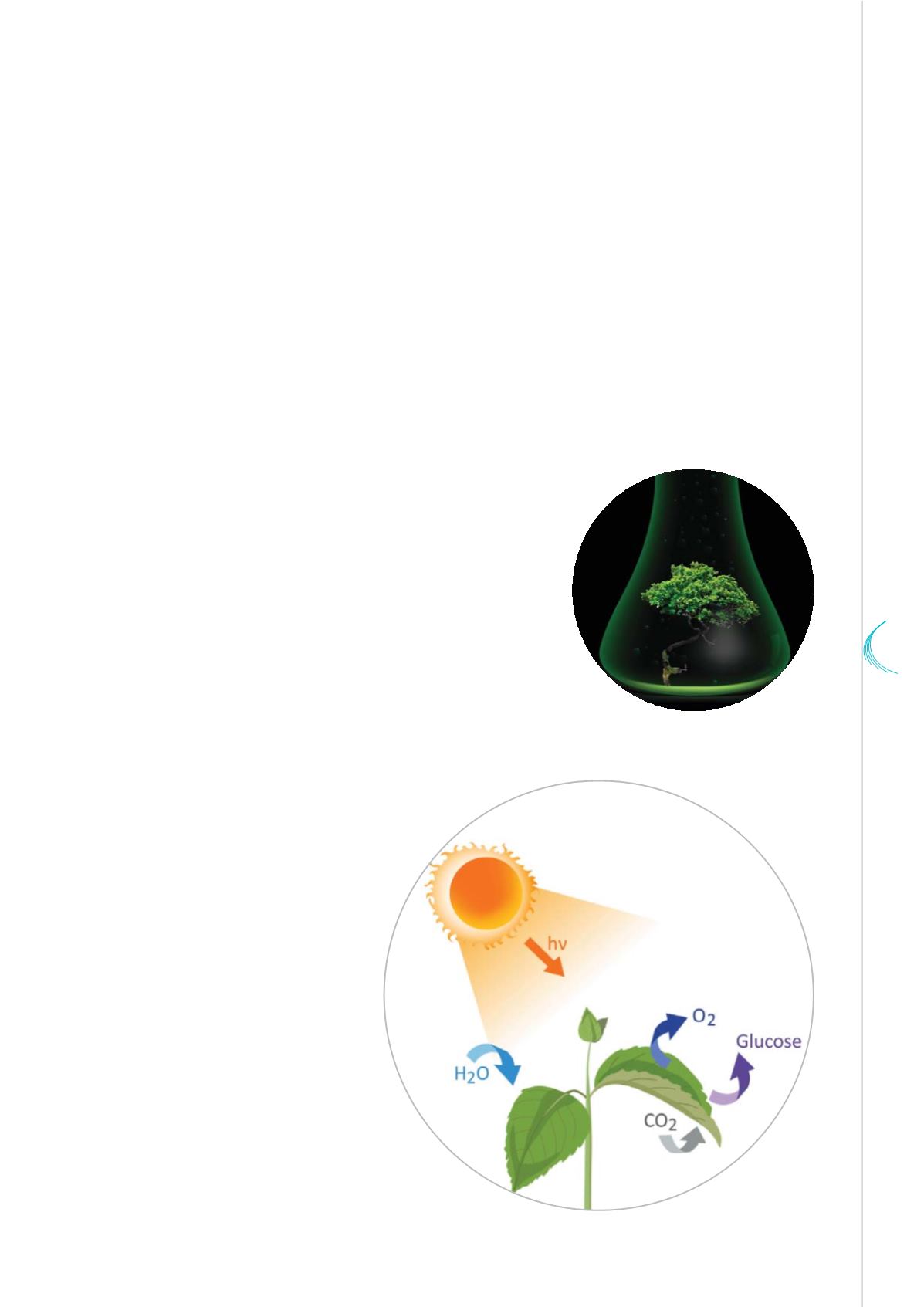

350
YEARS
OF
SCIENCE
53
© From Jakinnboaz - Fotolia
CO
2
is a greenhouse gas, but it is also a molecule which,
through photosynthesis, reacts with water to produce the
whole organic matter essential for life.
© emaria - Fotolia
1987 Nobel Prize). Most of the new materials in current development in the industry are derived from such
collaboration between chemists and physicists.
Polymer chemistry expanded rapidly after the First World War. Rubber production, spurred by military
needs, led natural production to be replaced with chemical synthesis. Such work was at the root of the first
syntheses performed on plastic materials, such as nylon during World War II. Research in macromolecular
chemistry (Staudinger, 1953 Nobel Prize) brought the development of a new range of materials quickly
achieving great industrial success. From structural polymers to functional polymers, they are still thriving
and diversifying. At the same time, studies on "soft matter", with, here again, close cooperation between
chemists and physicists (de Gennes, 1991 Nobel Prize), brought about important progress in the field of
liquid crystals, emulsions and enhanced oil recovery.
21
st
Century: chemistry and sustainable development
It is often said that "chemistry is everywhere": it should thus be
concerned with society's needs and be in line with sustainable
development. The synthesis of chemical products, which are
often opposed to natural products, draws an increasing part of
its inspiration from biological processes. There are mentions
of "soft chemistry", "green chemistry", or even "bio-inspired
chemistry", which are rooted in the observation of living beings.
Global warming is one of the major concerns of our times. It is linked
to the production of greenhouse gases, such as carbon
dioxide, CO
2
. What role may chemistry play in the
capture, storage and recycling of CO
2
? For the
chemist, theCO
2
molecule is essential to life.
Through photosynthesis and under the
action of the sun’s radiation, it reacts
with water to form oxygen and the
organic molecules – sugars, starch,
cellulose, etc. – that are necessary
for life to develop on Earth.
Couldn’t we imitate nature and
develop "bio-inspired" chemistry
that would use the photoreduction
of CO
2
into CO, HCOOH or CH
3
OH?
This is a promising avenue of research,
which relies on progress made in the field
of catalysis.


















